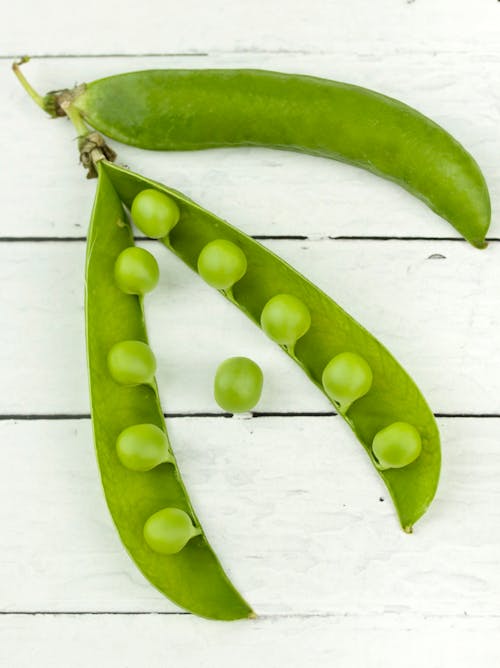
Green peas are a delightful addition to any garden, offering sweet, tender pods that are both nutritious and versatile. Growing green peas organically ensures that you enjoy fresh, chemical-free produce while contributing to sustainable gardening practices. In this guide, we’ll walk you through everything you need to know about cultivating perfect green peas using organic seeds.
Why Choose Organic Seeds for Green Peas?
Organic seeds are grown without synthetic pesticides or fertilizers, ensuring they are free from harmful chemicals. They are also more resilient to pests and diseases, making them ideal for sustainable gardening. By choosing organic seeds, you’re not only protecting your health but also promoting biodiversity and soil health.

Types of Green Peas
Before planting, it’s essential to select the type of pea that suits your garden and culinary preferences:
- Garden Peas (English Peas): These have sweet, starchy seeds and inedible pods. They require shelling before consumption.
- Snow Peas: Known for their flat, edible pods, snow peas are a staple in stir-fries and other dishes.
- Snap Peas: These combine the sweetness of garden peas with the crispness of snow peas. Both the pod and seeds are edible.
When to Plant Green Peas
Green peas thrive in cool weather, making early spring or late fall the best times for planting. Follow these guidelines:
- Spring Planting: Sow seeds as soon as the soil temperature reaches 40°F (4°C). This is typically 4-6 weeks before the last frost.
- Fall Planting: Plant 8-10 weeks before the first expected frost. However, avoid planting in excessively warm soil as it can hinder germination.
Preparing Your Garden for Organic Green Peas
1. Soil Preparation
Green peas prefer well-drained, loamy soil with a pH between 6.0 and 7.5. Here’s how to prepare your soil:
- Test your soil pH and amend it if necessary.
- Add organic compost or well-rotted manure to enrich the soil.
- Avoid over-fertilizing with nitrogen-rich fertilizers since peas fix their own nitrogen.
2. Trellising
Pea plants benefit from support systems like trellises or stakes:
- For bush varieties: Minimal support is needed.
- For vining varieties: Use trellises or netting to encourage upward growth and ease harvesting.

Planting Organic Green Pea Seeds
1. Pre-Germination (Optional)
Pre-germinating seeds can speed up germination:
- Soak seeds overnight in water to soften their tough outer coat.
- Place them in a damp paper towel inside a perforated plastic bag until roots begin to sprout.
2. Direct Sowing
- Space seeds 1-3 inches apart in rows that are 18 inches apart.
- Plant seeds about 1 inch deep in moist soil.
- Water thoroughly after planting but avoid waterlogging.
Caring for Your Green Pea Plants
1. Watering
Keep the soil consistently moist but not soggy:
- Water deeply once or twice a week, increasing frequency during dry spells.
- Avoid overhead watering to minimize the risk of fungal diseases.
2. Weeding
Peas have shallow root systems, so weed carefully:
- Use mulch around the base of plants to suppress weeds and retain moisture.
3. Pest Management
Common pests include aphids and pea weevils:
- Use neem oil or insecticidal soap as organic pest control measures.
- Encourage beneficial insects like ladybugs by planting companion flowers such as marigolds.
4. Disease Prevention
To prevent diseases like powdery mildew:
- Ensure proper air circulation by spacing plants appropriately.
- Water at the base of plants rather than overhead.

Harvesting Green Peas
Knowing when to harvest is crucial for flavor and texture:
- Garden Peas: Harvest when pods are plump but not overly mature.
- Snow Peas: Pick when pods are flat but fully grown.
- Snap Peas: Harvest when pods are crisp and seeds are small.
Always harvest regularly to encourage continuous production.
Storing Freshly Harvested Green Peas
To maintain freshness:
- Cool harvested peas quickly to remove field heat.
- Store them in a vented plastic bag in the refrigerator at around 32°F (0°C).
- For long-term storage, blanch peas and freeze them immediately.
Tips for Success with Organic Green Peas
- Rotate crops annually to prevent soil-borne diseases.
- Use organic mulch like straw or shredded leaves to regulate soil temperature.
- Incorporate companion plants like carrots or radishes to optimize space and deter pests.
Growing green peas with organic seeds is a rewarding experience that offers delicious produce while promoting eco-friendly gardening practices.
By following these steps, you’ll enjoy an abundant harvest of sweet, tender peas that are perfect for your table!

